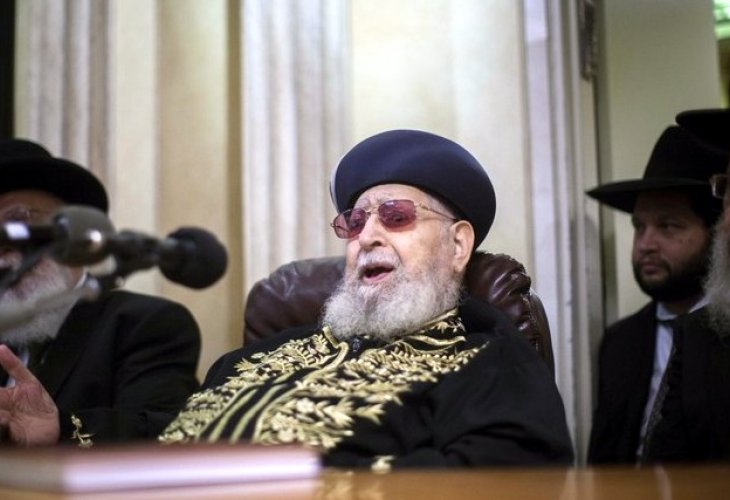Jewish Law
Temple Mount Holiness Today: Why Jewish Law Forbids Entry
The enduring sanctity of the Temple Mount and why entering it today remains one of the gravest Torah prohibitions
- Halacha Yomit / Mipiskei Maran
- |Updated

The Temple Mount (Har HaBayit) is the mountain upon which the First and Second Temples stood until nearly two thousand years ago, when — due to our sins, they were destroyed by the Roman emperor Titus. Since then, the mount has remained desolate, until the Muslims (Ishmaelites) built their mosques upon it, as is known to this day — fulfilling the prophecy, “Foxes now walk upon it.”
The Sanctity of the Temple and the Problem of Impurity
The holiness of the Temple is exceedingly great. According to Torah law, anyone who is ritually impure from contact with the dead (tamei met) is forbidden to enter the area of the Temple itself.
Today, when we lack the ashes of the Red Heifer, every Jew is considered tamei met — since no one among us has been purified from contact (direct or indirect) with the dead. Therefore, it is absolutely forbidden for anyone in our time to enter the actual area of the Temple — and doing so incurs the severe punishment of karet (spiritual excision) and multiple transgressions of Torah prohibitions.
This raises two halachic questions:
Does the Temple’s sanctity still remain after its destruction?
Is the entire area of the Temple Mount forbidden, or only the specific section that was the Temple itself?
The Rambam: “Its First Sanctification Sanctified It Forever”
Maimonides (Rambam, Hilchot Beit HaBechirah 6:14) rules: “The first sanctification of the Temple and Jerusalem by Shlomo, sanctified it for its time and for all time to come, even though it is now desolate. This is because the sanctity of Jerusalem and the Temple is due to the Divine Presence (Shechinah), and the Divine Presence is never nullified.”
Thus, even though the Temple is in ruins, its holiness endures forever. Accordingly, anyone who enters the Temple area today violates a Torah prohibition and is subject to karet.
What About the Rest of the Temple Mount?
This prohibition applies only to the specific area of the Temple and its courtyards, not necessarily to the entire Mount. The Rambam (Hilchot Bi’at Mikdash 3:4) writes: “A person who is tamei met, and even a corpse itself, may enter the Temple Mount.”
In practice however, identifying the exact boundaries of the Temple area today is extremely uncertain.
Modern Halachic Rulings
Many great authorities of recent generations conclude that since we no longer know the precise location of the Temple and its courtyards, the majority of the Temple Mount must be treated as if it may contain sacred zones, making entry a serious risk of violating Torah law.
Rav Ovadia cites Rabbi David of Karlin (She’eilat David, Drishat Tzion, sec. 14), who wrote that since we cannot pinpoint the location of the Altar (Mizbeach), there is a grave concern of karet for anyone who enters. Therefore, the consensus of leading halachic authorities is to absolutely forbid ascending the Temple Mount, even after ritual immersion, since it could lead the masses to trespass sacred areas in impurity.
Those Who Permit Entry
Although a few have relied on the view of the Ra’avad, who held that karet does not apply today, this opinion has been rejected by nearly all later authorities. Even according to some who cite the Ra’avad, the act would still constitute a Torah-level prohibition, though not punishable by karet. Therefore, the halachic ruling follows the Rambam — that entry remains forbidden.
The Case of Sir Moses Montefiore
In 1867 Sir Moses Montefiore, the famed British Jewish philanthropist, visited Jerusalem and entered the Temple Mount area. At the time, Rabbi Yosef Moshe of Lissa (son of the author of Chavat Da’at) publicly excommunicated him for entering a sacred site forbidden by Torah law.
Montefiore, being a devout man, later apologized to the rabbis of Jerusalem, explaining that he had entered out of ignorance, mistakenly relying on the lenient opinion of the Ra’avad. The Jerusalem sages accepted his repentance and annulled the excommunication, clarifying that while he had erred, he was not liable for punishment, since his action was unintentional.
Historical records (Sha’arei Yerushalayim, 1879) confirm that Montefiore’s entry was done with special permission from the Ottoman Sultan and against the wishes of Jerusalem’s rabbis — including Rabbi Shmuel Salant, who personally rebuked him for his mistake.
Final Ruling
It is strictly forbidden to enter any part of the Temple area — and according to most authorities, the entire Temple Mount — in our time. Because we no longer know the precise boundaries of the Temple and its courts, and the holiness of the site remains eternal, entry constitutes a severe Torah transgression that may carry the punishment of karet.
Those who permit ascent to the Mount act in error, as all leading halachic authorities have firmly decreed to refrain from doing so “until Shiloh comes”, when God will once again purify His people, as it says: “I will sprinkle pure water upon you, and you shall be cleansed.” (Yechezkel 36:25)

